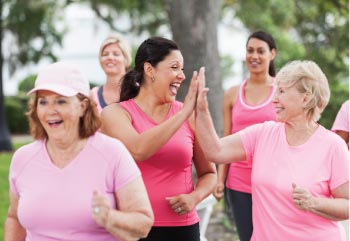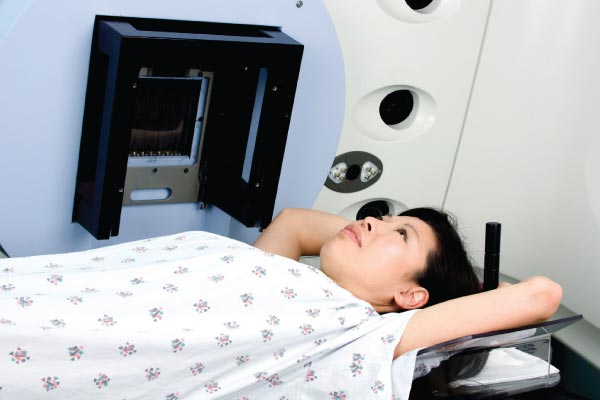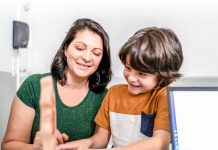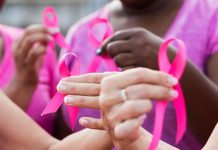The month of October is going to be screaming out ‘breast cancer awareness’ around the Kingdom with charity campaigns being the flavour of the month. Read on to know how you can protect yourself from the disease. Sound knowledge is half the battle won!
Bahrain has the highest number of breast cancer cases in all of the GCC. So whether you are 60, 20, or anywhere in between, it’s worth knowing the deal on this deadly disease, which is now gripping more women than ever.
Breast Cancer — What, Why, When?
Our expert: Dr Kiran Bijlani, obstetrician and gynaecologist at Royal Bahrain Hospital
Breast cancer is a ‘nonsensical’ overgrowth of cells in the breast tissue. They grow and spread to the body’s lymphatic and vascular systems, causing tremendous harm to the whole body. These dangerous cells deplete the body of immunity, ultimately causing mortality. It is notorious for spreading to other parts of the body rather rapidly.
“This type of cancer is most unpredictable. A small lump may spread extremely fast, especially in the case of younger women,” says Dr Kiran. “Lumps which persist beyond the time of menstruation must be checked. It’s important to remember that growths which are not painful and are fixed to the skin or the chest wall signal a bad prognosis, as opposed to those lumps which move about. I strongly recommend that painless, fixed lumps should not be ignored.”
The disease shows highest incidence in women over 50 years, but our expert sees young victims as well. She advocates a monthly breast self-examination from the age of 20 years onwards, which every girl must learn to do. After 30, a physician’s examination every two years is essential. Periodic mammograms as per the doctor’s orders after 40 years are imperative.
“Breast cancer is wrongly thought to be a genetic disease. The percentage of genetically influenced cases is actually quite small,” says Dr Kiran. “Besides age and gender, there are other risk factors at play. This is an oestrogen-based cancer. More exposure to oestrogen, due to early menarche and late menopause, increases the risk of breast cancer. Your lifestyle is an important contributory factor. Obese women tend to store extra oestrogen in their peripheral fat, raising their risk of cancer.”
 Symptoms include a lump in the breast, reddish breast discharge or orange-peel appearance of the skin. Symptoms of later stages include pain in the breast or the bones, or a fungal mass which may even break through the skin.
Symptoms include a lump in the breast, reddish breast discharge or orange-peel appearance of the skin. Symptoms of later stages include pain in the breast or the bones, or a fungal mass which may even break through the skin.
“Women undermine the importance of breast examination, of which the grid method is most effective. Less than one-fifth of lumps are found to be malignant. Most lumps are benign, so women must not hesitate to get screened regularly,” advises our expert.
Contrary to popular myth, underwire bras have no adverse effect on breasts. However, she advises avoiding deodorants and talcs due to their carcinogenic substances. Oral contraceptives cannot be put down as a risk factor either, unless they are taken continuously over a period of 10 years.
The BRCA1 and BRCA2 genes gained global recognition when Angelina Jolie tested positive for these gene mutations and took steps to safeguard herself from breast cancer. These gene tests help define one’s genetic risk of cancer and will be available at Royal Bahrain Hospital in the near future.
It is important for every woman to calculate their risk factors and draw upa customised programme for herself. The aim today is to catch the cancer even before the patient has any symptoms. Early detection is the key to surviving breast cancer.
Tackling the monster
Our expert: Dr Sanjay Gupta, surgeon at American Mission Hospital
“On finding a lump, it is best to immediately see a physician for an examination. The way a breast lump feels, its consistency, mobility and tenderness can give a lot of information to your doctor,” says Dr Sanjay.
Breast ultrasound and mammograms are the usual radiology investigations that lead to a diagnosis. A fine needle biopsy or an open biopsy will be performed to examine the suspicious tissue from the breast.
Mammograms see the pattern of calcium deposited to get information about the breast lump. MRI, unlike a mammogram uses radio waves and strong magnets instead of X-rays. Lately MRI scans have gained popularity because it is painless and gives a fair amount of information.
Our expert says, “If MRI is used, it should be in addition to, not instead of, a screening mammogram. This is because while an MRI is a more sensitive test making it more likely to detect cancer than a mammogram, it may
still miss some cancers that a mammogram would detect.”
Once cancer has been diagnosed, it is then staged and typed. Depending on its size, its spread over the body and how aggressive it is, a treatment plan can be drawn. Treatment is modified according to the stage and type. Modes of treatment include surgery, radiation, chemotherapy and hormonal therapy. Dr Sanjay urges patients not to sit over a diagnosis of breast cancer. Cancers that are small when discovered and have not spread are more easily treated. In very early stages, with breast conserving surgery, the patient is barely disfigured and leads a normal life.
You are not alone
Our expert: Galiena Verton, cancer rehabilitation specialist at Bahrain Breast Cancer Support Group
“Women who have suffered from breast cancer need all the support and cooperation they can get. Our close-knit group helps affected women in various ways.
We accompany them to chemo sessions, cook for them on especially bad days or lend a listening ear to someone who needs it,” she says.
Evidence-based statistics show that women in the Middle East are confronted with breast cancer 14 years earlier than the rest of the world. That is the reason Galiena lays emphasis on spreading the awareness about this ‘taboo topic’ in our region.
Surgery and other treatments show a host of serious physical and psychological issues that can be very upsetting. Some may experience lymph oedema or extreme fatigue. Others may be severely depressed, feel angry with themselves and their circumstances or find their memory and focus deplete. When women who have undergone the same ordeal share their doubts and fears, it helps them cope better with the situation they are in.
“Exchanges of simple tips, like how to exercise better, eat healthy and deal with day-to-day issues related to one’s body, go a long way. Women share complementary therapies, such as yoga, reiki and massages, which may have helped them,” says Galiena.
Currently, there are hardly any rehabilitation facilities for survivors. Compared to the West, there is a lot of scope and necessity for future development in terms of formal aftercare for breast cancer survivors. Women in Bahrain, who have been through this life-threatening ordeal, would greatly benefit from such centres.





































